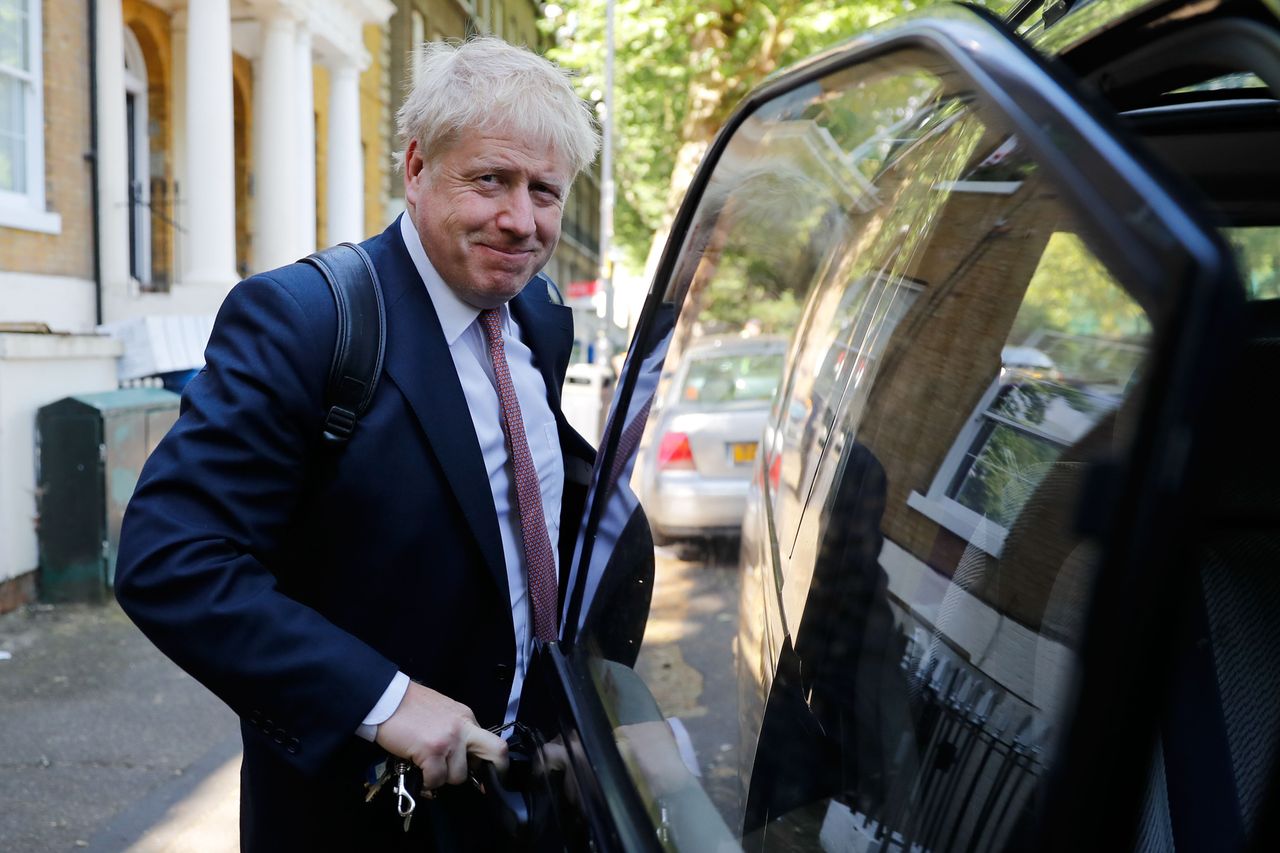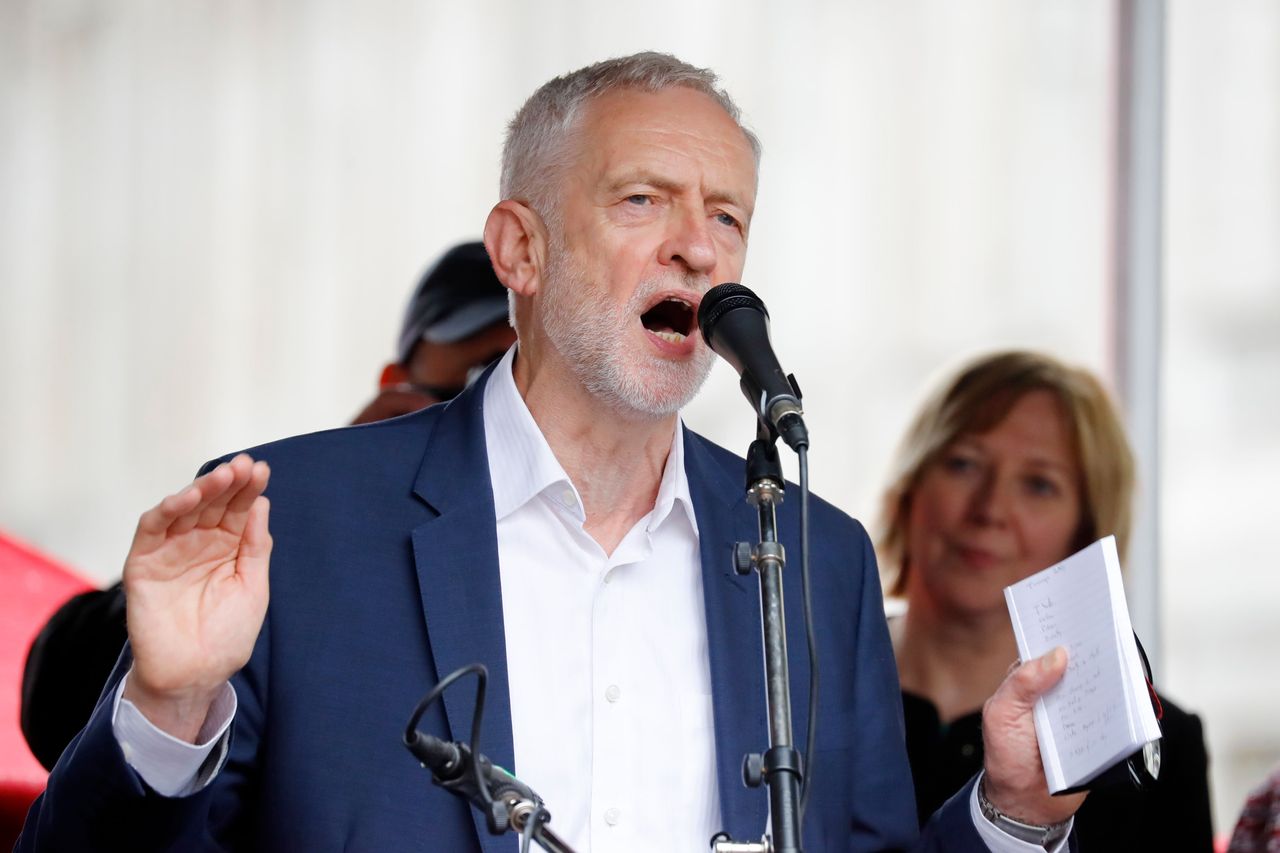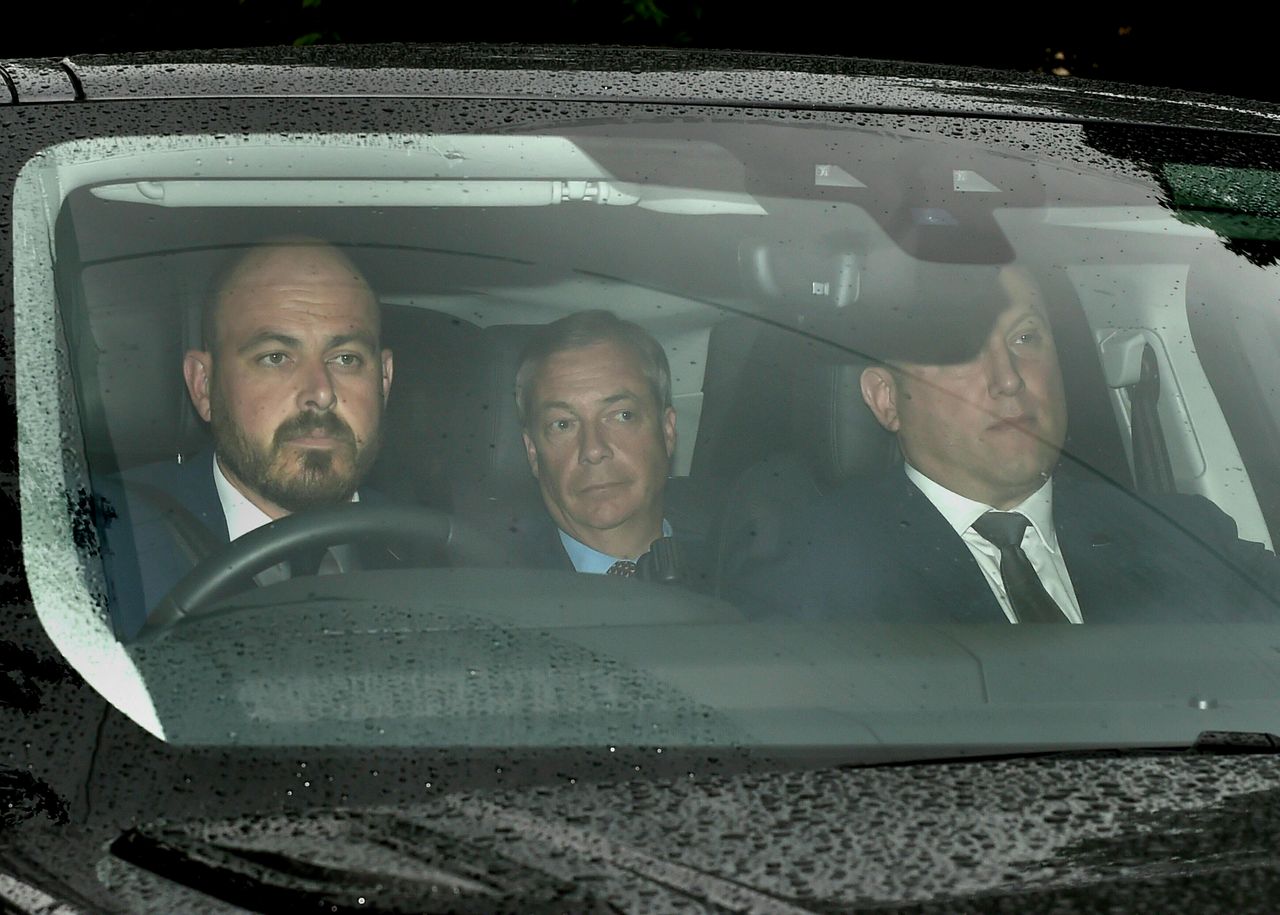With its columns of Aberdeen granite and floors of Greek marble, the splendour of the Foreign Office’s Durbar Court was meant to provide the grand setting for the latest chapter in the US-UK’s ‘special relationship’.
As it happened, the Victorian backdrop to Donald Trump and Theresa May’s press conference only served to underline that post-war American jibe about Britain’s faded glories: it had lost an empire and not yet found a role. And in the age of Brexit, that role is more elusive than ever.
But away from the giant Union Jacks and the stars and stripes, it was the Downing Street cat, Larry, who provided perhaps the most striking image of the day. Seeking refuge from the rain, he hid underneath ‘the Beast’, the president’s bulletproofed limo.
At any moment, the car could have crushed the No.10 moggy. Throughout the second day of his State Visit, Trump made perfectly clear that he was the heavyweight in this unequal partnership. A post-Brexit trade deal could help the UK shelter from inclement economic weather outside the European Union, but only on America’s terms.
Trump started the day with a fumbled stab at diplomacy as he and May shared a business breakfast meeting at St James’ Palace with US and UK companies.
While she talked of the great opportunities of a new trade deal, the president was the one to mention the elephant in the room: that she would not be around to see such a deal struck. “It’s an honour to have worked with you,” he said, before joking: “And I don’t know exactly what your timing is, but stick around.”
With May the lamest of lame duck leaders, due to step down as Tory leader this Friday and as prime minister next month, Trump was in playful mood and for once keen to be polite. But he spent the day effectively looking over his host’s shoulder, surveying her potential successors.

In a clear signal of intent, Trump had actually phoned Boris Johnson the previous night to invite him to meeting at the US ambassador’s residence in Regent’s Park on Tuesday evening.
The former foreign secretary, who has spent more than two years getting close to Trump, explained that he could not meet in person as he had to attend a hustings meeting in the Commons later. Trump didn’t take the rejection as a slight and instead the pair spent 20 minutes on the phone, chatting through Brexit and other policy.
Trump certainly carried a relaxed air when he arrived at No.10 for the formal ‘bilateral’ talks that were intended to be the political guts of his trip.
May sat in her usual place in the middle of the Cabinet room, while the president sat opposite her in the spot normally taken by the foreign secretary. As they faced each other across the coffin-shaped table, both sides tried to ignore that this was a PM staring down the barrel of her own political mortality. Businesslike, is how one aide put it.
The talks lasted an hour and were then continued for a further hour upstairs in the State Dining Room, over Lake District beef fillet, followed by Eton Mess. No one joked about the pudding’s links to David Cameron, his former school or Brexit.
May’s team were delighted that Trump made a UK-US trade deal his priority, right from the start of the talks. Shared expertise on new technology was discussed in particular. Yet hefty foreign policy topics were also covered, from climate change to China, Syria, Yemen and Iran.
On the key subject of Huawei, Trump was reassured as May set out her strong advice that intelligence sharing would never be put at risk and that an ongoing review was taking place anyway. The plain fact is that fresh complexities mean that she is unlikely to be in post when that review is published.
On Iran, May repeated the UK would not pull out of the multilateral deal. On climate change she stressed the importance of the Paris accord, while focusing on areas Trump could agree on such as cleaner energy.

But one of the most telling facts of the day was that Trump and May didn’t have a one-on-one meeting. In fact the only time they spent chatting alone was during the two minute stroll from No.10 through the Foreign Office courtyard and on to their press conference.
When the pair of them first met in the Oval Office in January 2017, May was so desperate to be the first foreign leader through the White House door that she offered a State Visit in return. Even then, they didn’t meet alone, as her chiefs of staff were present.
But while that first Washington press conference felt like the arranged marriage of an odd couple, and last year’s Chequers event resembled a fractious Relate counselling session, today’s Foreign Office Q&A had the air of a polite divorce proceeding.
That didn’t stop the president from displaying a wandering eye for who should be his next partner, as he praised Johnson, and Jeremy Hunt (sitting nearby). “I know Boris, he’d do a very good job. I know Jeremy, he’d do a very good job.”
And then came that delicious moment when Trump made plain he wasn’t close to Michael Gove. “I don’t know Michael,” he said, forgetting the fact that Gove had conducted an interview with him in Trump Tower two years ago.
And when he asked “would he do a good job?”, the plea for advice was directed not at May but at Hunt. Nothing could have more clearly indicated that May’s power was draining by the minute.
The PM’s opening speech certainly had a valedictory feel, as she tried to list those areas (the US kicking out Russian spies after Salisbury) where she had had an influence since they first met.
When she mentioned “those that will come after us”, thoughts turned that Tory leadership race, but Trump didn’t have the look of a man who felt he was going anywhere soon.
The president had his usual trademark inability to speak the truth, not least when he claimed that there were “thousands of people cheering” him (there was a handful) as ‘the Beast’ carried him through the streets of London and a “very small” protest (numbering thousands) to greet him. Inside the Foreign Office courtyard and inside even the covered Durbar Court, the demonstrators could be heard yelling and whistling.

There were moments when May gently pointed to differences, not least her reminder that everyone should recognise China’s “economic significance” and her defence of “free, open markets”, both a reference to Trump’s protectionism. She even came close to ridiculing his frankly daft suggestion that she should sue the EU to get a better Brexit deal.
Yet as May claimed “we went into negotiations and we came out with a good deal”, it took Trump to remind her that her deal was so good it failed to get past her own parliament. “I woulda sued, but that’s okay,” Trump joked. “But you never know. She’s probably a better negotiator than I am.”
While Trump did his best to be kind to May, the old menace wasn’t far beneath the surface. When he was asked about tariffs on Mexico as a punishment for the illegal immigration into the US, he started talking about “coyote” drug smugglers and suggested his southern neighbour was run by cartels. As he talked about “the invasion into our country”, May couldn’t hide her grimace.
The president described Jeremy Corbyn as “a negative force”, a line that the Labour leader will take as a compliment. But in a revealing line he said Corbyn’s biggest sin was that he was a “critic”. “I really don’t like critics as much as I like and respect people who get things done - so I decided not to meet,” he said. Trump hates critics, be they movie critics, theatre critics, or political critics.
That thin-skinned nature, combined with his determination to put ‘America First’, is a tricky mix for any future British prime minister. And that was no more apparent than when he declared that the NHS would indeed be “on the table” in any trade deal talks between the UK and US.
In many ways, Britons should at least be grateful that Trump is so open about America’s raw self-interest and determination to exert its global power. Even under Obama, there were fears for the NHS under an EU-US deal, but it’s just that Trump is more candid.
Trump said he wanted ”a phenomenal trade deal” with “tremendous potential” to increase cross-Atlantic trade by “two or three times”. The difficulty for May, or rather her successor, is whether that will fail to make up for the possible EU trade loss in the process.

The EU is Britain’s largest economic partner, accounting for 49.4% of its trade. The US ranks second, with 14.7%. Boris Johnson famously wants to have his cake and eat it, but he too will have to work out the cost-benefits of a new deal.
After May’s press conference ended, she and Trump went to the Churchill War Rooms together. But once more, he had an eye on someone else, spending 33 minutes with ITV’s Piers Morgan one-on-one - that’s 31 minutes more than he spent alone with the PM.
To underscore it all, Trump then hosted Nigel Farage - the man whose Brexit party has sparked the Tory panic that led to May’s downfall - at the US ambassador’s residence. The pair met alone.
Even backbench Conservative Brexiteers Iain Duncan Smith and Owen Paterson then had tea for half an hour with the president, without any aides in the room.
Back in Downing Street, Larry the cat sauntered around once more, the hefty black limousine a distant memory.
In many ways, though Theresa May will accompany the president to D-Day commemorations on Wednesday and Thursday, his motorcade has already moved on. There’s no sign yet that it won’t roll over May’s successor too.
